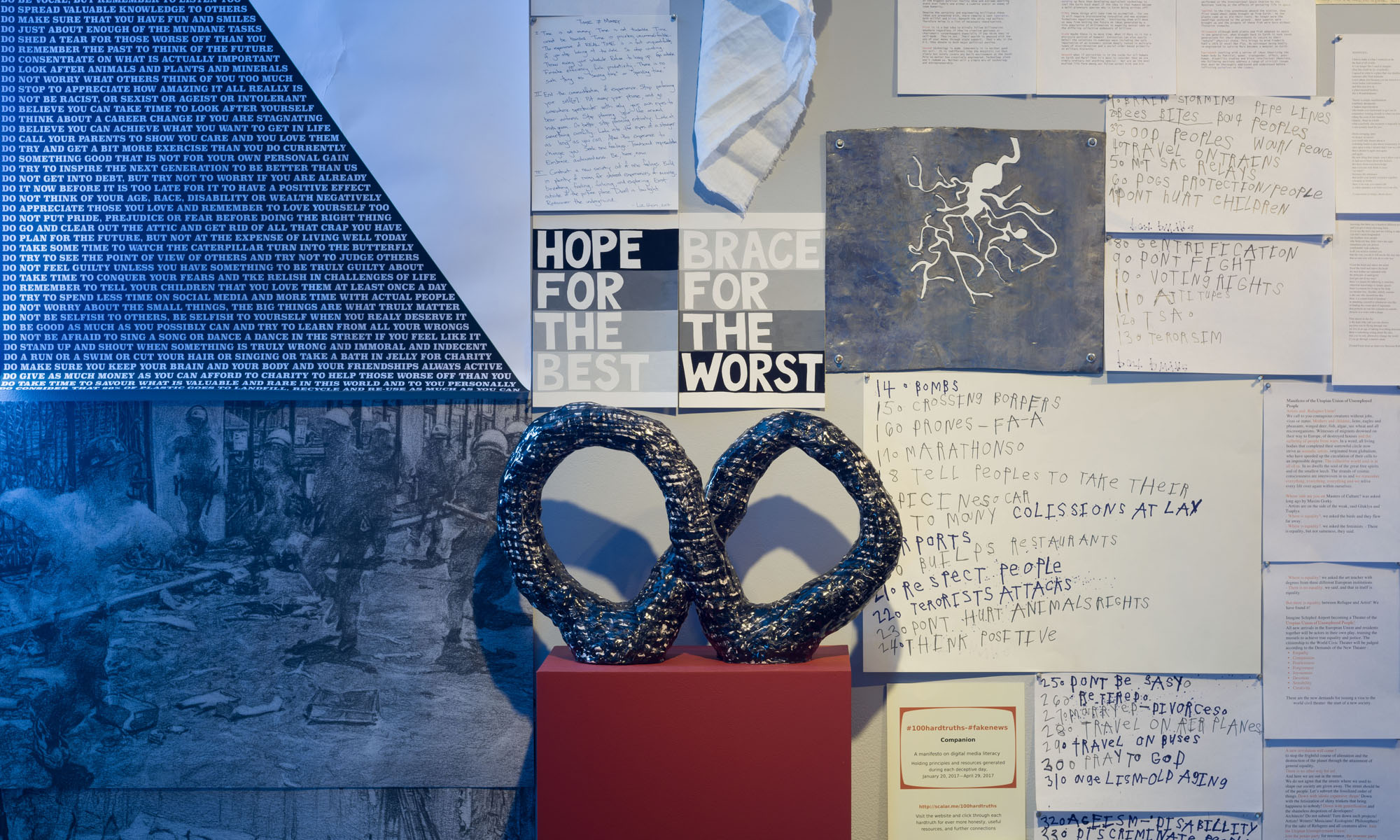About Cure Park (2017)
On Saturday, October 28, 2017, the Carnival of the Oppressed Feelings filled the streets of Amsterdam. This performative march, initiated by Russian artist Gluklya and TAAK, brought together refugees housed in the center for asylum seekers at the former prison Bijlmerbajes, artists and everyone who feels involved, in a grotesque carnival.
The Carnival of the Oppressed Feelings resulted from a series of workshops and meetings Gluklya had with refugees in her studio in Lola Lik, a creative hub in the former prison Bijlmerbajes, situated next to AZC Wenckebachweg. These sessions where aimed at trying to find new visual forms of expression for emotions which are difficult to convey because of language barriers. During the preparations for the festival, costumes, masks, music and objects were developed, expressing fear, vulnerability, loneliness and what it feels like to live in a former prison. With this carnival, we do not only want to make a powerful statement about welcoming refugees, but also give refugees a face and a voice in the public domain.
Cure Park
The intention of Cure Park was to invite artists, professionals and public to actively contribute to mutual learning and sharing knowledge and experiences tojointly explore what it means to take care of yourself, others and the environment. What happens when yougive orreceive care, what are the conditions, who decides, what questions are asked and what are the questionsthat we often shy away from when speaking in public.
Timely physical and mental spacesdesigned by artist, where sickness, accident, traumaand all that what makes us different are allowed to exist, providedsecurity to open up to each other and confront us with different states of being and experiencing the world. Care giving and receiving as a common ground for exchangeon spiritual, emotional, mental and economical level.
We believe that artists work towards the futurewith reality as their raw material.
Art as a form of “thinking by doing” presupposes social commitment combined with uncertainty and flux and that makes the practice of art suitable as a model for other fields of knowledge and valuable in conjunction and cooperation with this, (read care).The purpose is to emphasize the real problematics on an individual level when we are confronted with illness and care and think together around it’s economical, political, social and spiritual dimensions, to enable us to acknowledge shared concerns.
We see the arts as a healing practice by not isolating the problem but to understand it as a part of a bigger whole.
Inspired by The Undercommons as introduced by Fred Moten and Stefano Harvey, starting form the notion that prosperity today isunderstood in the lightof the mechanisms of control: the spread of capitalist logistics, control and management of care. Mechanisms that not only shut out the ‘underprivileged’but also do not recognize the injustice it creates.
The goal of CP wasnot to end problems, but to change the world thatcreates the problems. That requires a different order of things, a different logic. Releasing antagonism and forms oflabeling, replaced by thinking in terms of dialogue, connecting people andinitiatives that do not partakeinto the current discourse and are therefore not heard. Thisis something that can be practicedas anongoing experiment, a way of doing and being together with others without a fixed place and time.
WithinCure Park, art has been conceived as a practice howtoshape methods and create the conditionsfor a meaningful exchange between artists, professionals and the public. Together we formulated questions that really matter, while experimentingand conductingmany forms of being together, working, guiding, listening, touching, speaking, feeling, eating, etc.
CP was aligned with the ideas of Degrowth from the late sixties, when a forum of economists, scientists and politicians advocated a world that is not dominated by growth, but in which other values prevail, maximize happiness and well-being through non-consumptive means—sharing work, consuming less, while devoting more time to art, music, family, nature, culture and community.
